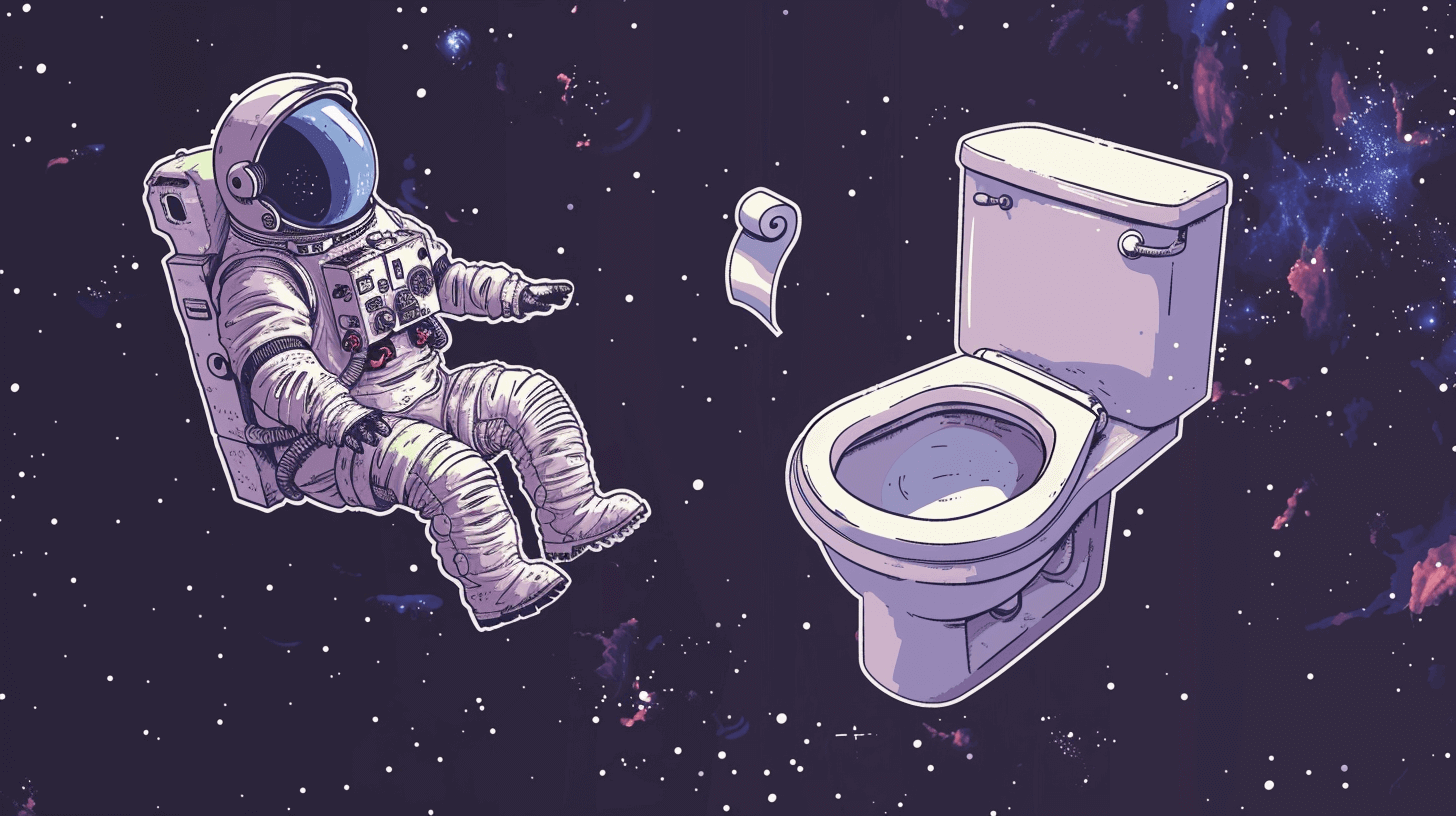Astronauts crap too!
Astronauts, despite their otherworldly endeavors, face the same biological necessities as us Earth-dwellers. Yes, even in space, they need to use the bathroom. But how exactly do they go about this peculiar task?
Let’s delve into the cosmic commode…
Back in 1961, Alan Shepherd, the first American in space, faced a rather awkward predicament. When he needed to relieve himself during his historic journey, he was told, “Do it in the suit.” And so he did, unintentionally short-circuiting his electronic sensors in the process.
Unlike Shepherd, John Glenn, on his Mercury orbital flight in 1962, was equipped with a functioning urine collection system, marking a significant advancement in space toiletry. Essentially, making him the fastest man alive while taking a number one!
Fast forward to today, where astronauts aboard the International Space Station (ISS) embark on missions lasting up to six months or longer. With prolonged stays in space, the need for efficient, comfortable and hygienic restroom facilities is paramount.
No reports of graffiti in the space bathrooms…
Unlike Earth toilets, which rely on gravity for waste disposal, space toilets employ suction and airflow due to the absence of gravity. This prevents waste from floating around and causing potential hazards.
During their cosmic calls of nature, astronauts must secure themselves to the toilet using handholds and footholds to counteract microgravity. A suction funnel prevents leaks during urination, while suctioning immediately begins upon lifting the toilet lid to reduce odors. Solid waste is collected in airtight containers and eventually disposed of by cargo ships returning to Earth.
In space, you’re kind of crapping in a vacuum… literally.
Liquid waste, however, undergoes a more intricate process. Urine is collected and processed through the Water Recovery System, which converts it into drinkable water, ensuring efficient water recycling on the ISS. While feces isn’t currently recycled, NASA is exploring methods for wastewater extraction in the future.
The evolution of space toilets has been remarkable. From the rudimentary hole-in-the-wall design of the Skylab era to the modern Universal Waste Management System (UWMS), developed by NASA in 2018 and sent to the ISS in 2020, advancements have been substantial. The UWMS, with its ergonomic design and gender-inclusive features, represents a significant improvement over previous models, particularly for female astronauts.
In space, you can’t heard the sound of a flush… because the space toilet sucks up your poo!
As humanity sets its sights on further cosmic exploration, the importance of reliable and user-friendly restroom facilities in space cannot be overstated.
Whether on a short journey to the moon or a prolonged voyage to distant planets, astronauts must have access to efficient bathroom solutions.
After all, even in the vast expanse of space, nature’s call cannot be ignored.
Although it would be difficult for the regular pooper to crap in space, it does not mean we haven’t all crapped in some unique places! We’d love to hear from ya! Shoot us a note! Or drop a comment on this article or any others that flush your senses.
